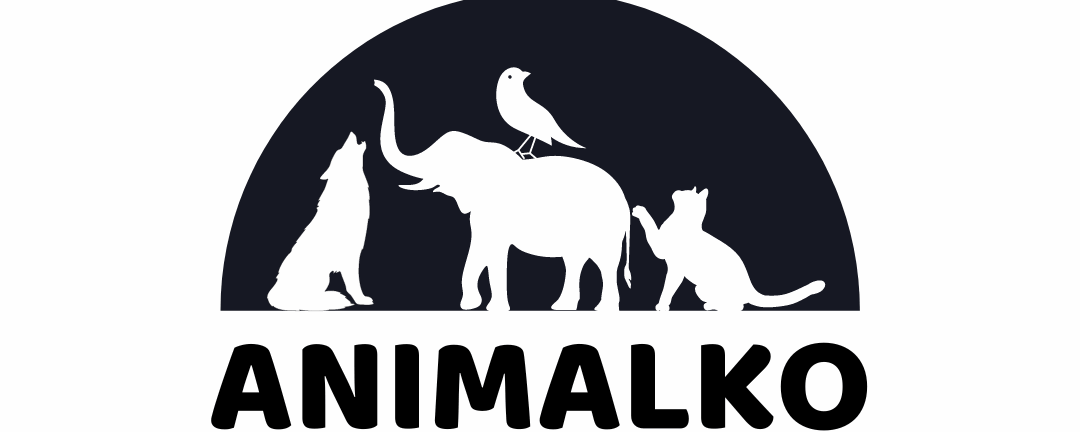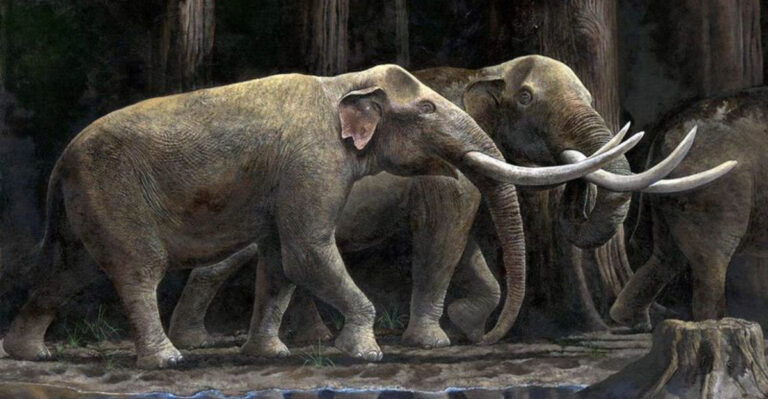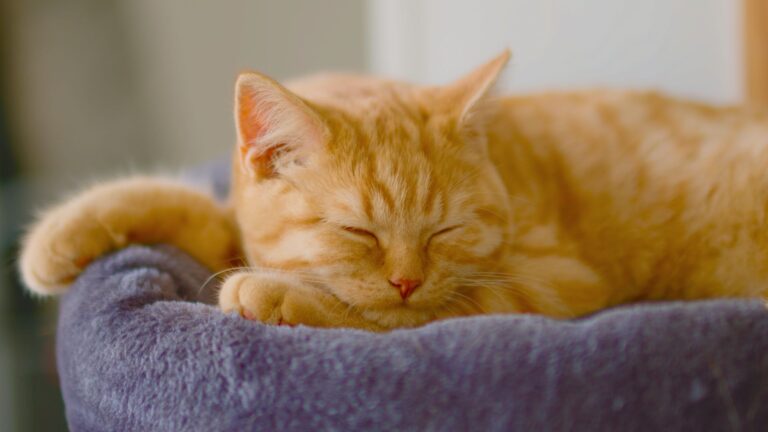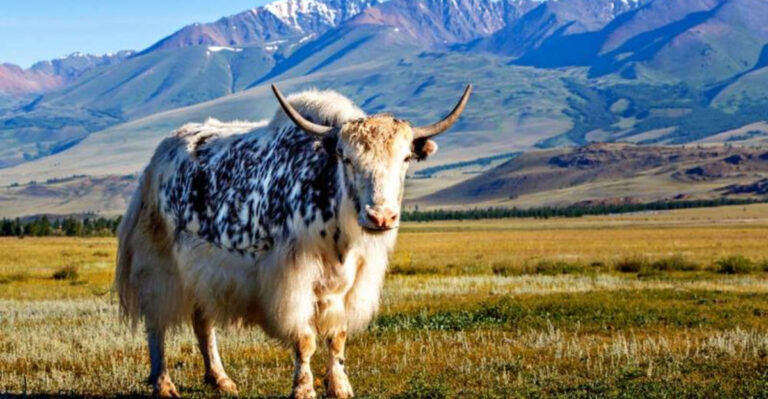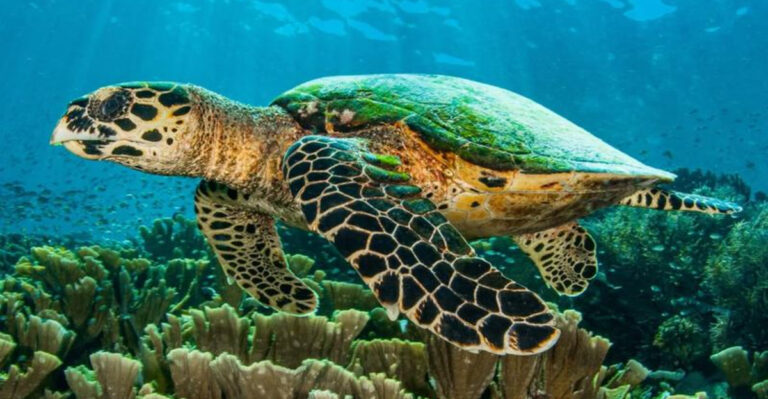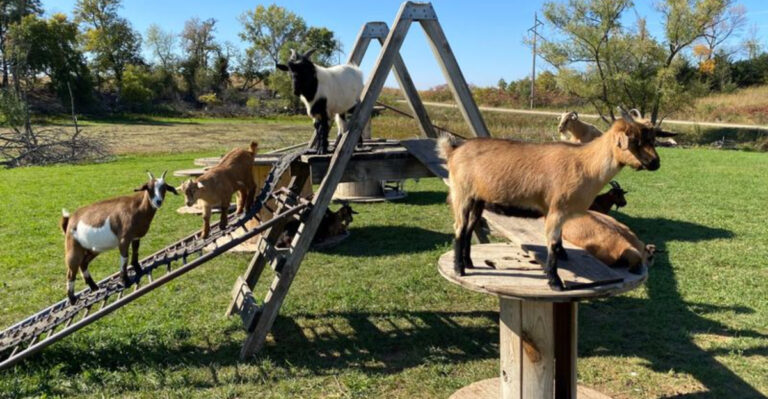12 Bear Species Ranked By How Dangerous They Are
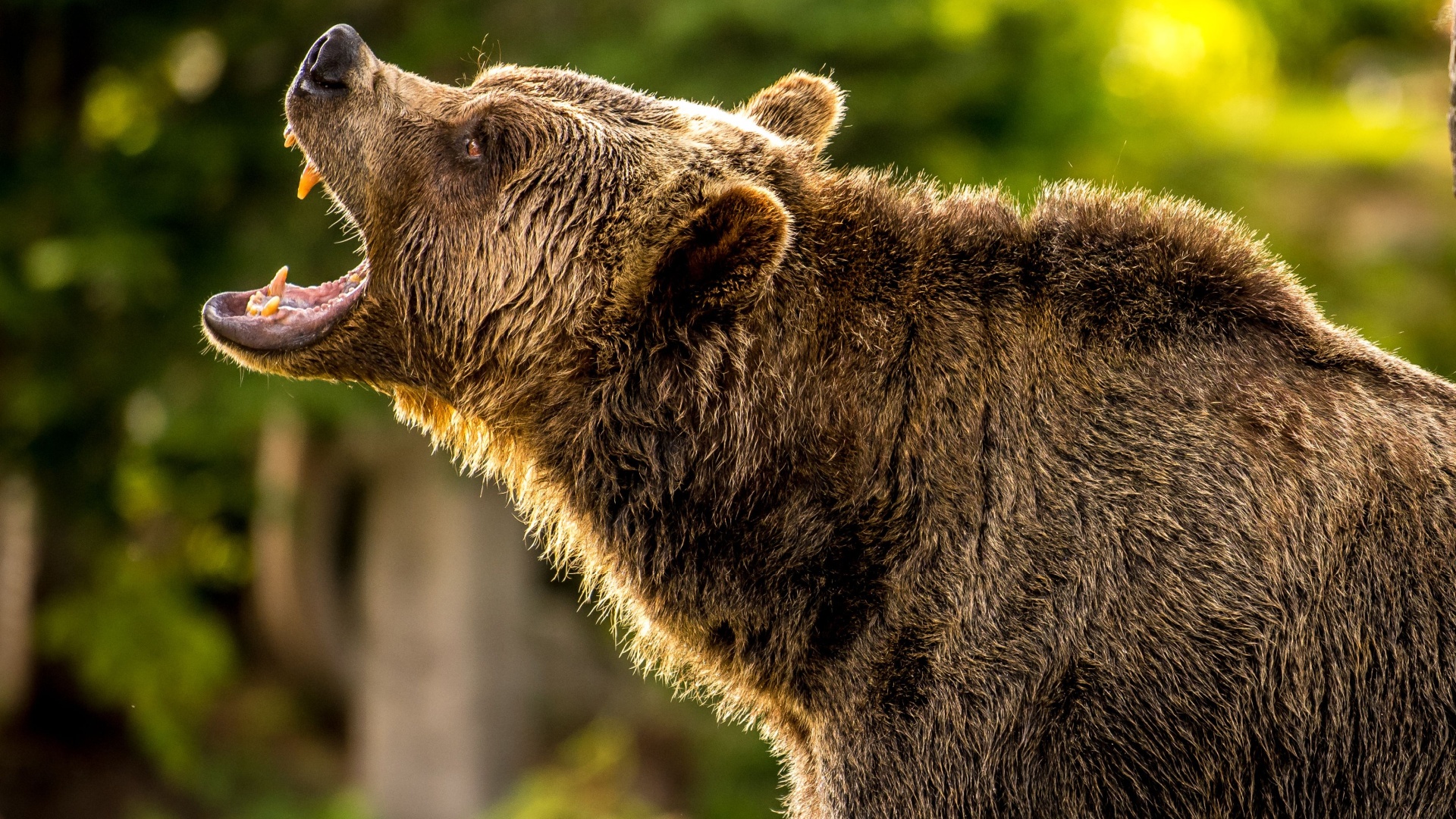
Welcome to our guide on the fascinating world of bears. In this article, we will explore distinct types of bears, ranked by their danger level.
Bears are majestic creatures that captivate our imagination, but they can also pose significant risks to humans. Each type of bear has unique characteristics and behaviors that contribute to its potential danger.
This guide will provide insights into these remarkable animals, helping you understand why some are more dangerous than others.
Whether you’re a wildlife enthusiast or simply curious, this ranking will offer valuable information to keep in mind when encountering these beautiful but potentially dangerous creatures.
1. Polar Bear

The polar bear is often considered the most dangerous bear due to its size, strength, and predatory nature. Found in the Arctic regions, these bears have adapted to the harsh, icy environment.
They are skilled hunters, primarily preying on seals. With their powerful build and sharp claws, polar bears can easily overpower their prey. Polar bears are highly territorial and have been known to attack humans if they feel threatened or perceive humans as a potential food source.
Their ability to blend into the snowy environment makes them stealthy hunters. The polar bear’s diet is high in fat, which is essential for surviving the extreme cold of the Arctic.
However, this also means they constantly search for food, leading them into areas where humans might be present. It’s crucial to maintain a safe distance from these magnificent creatures, as their interactions with humans can be unpredictable and dangerous.
In recent years, climate change has impacted their habitat, forcing polar bears to venture closer to human settlements in search of food.
This increase in human-bear encounters highlights the importance of awareness and caution when in polar bear territory. Always respect their space and follow guidelines if you find yourself in regions where polar bears live.
2. Kodiak Bear
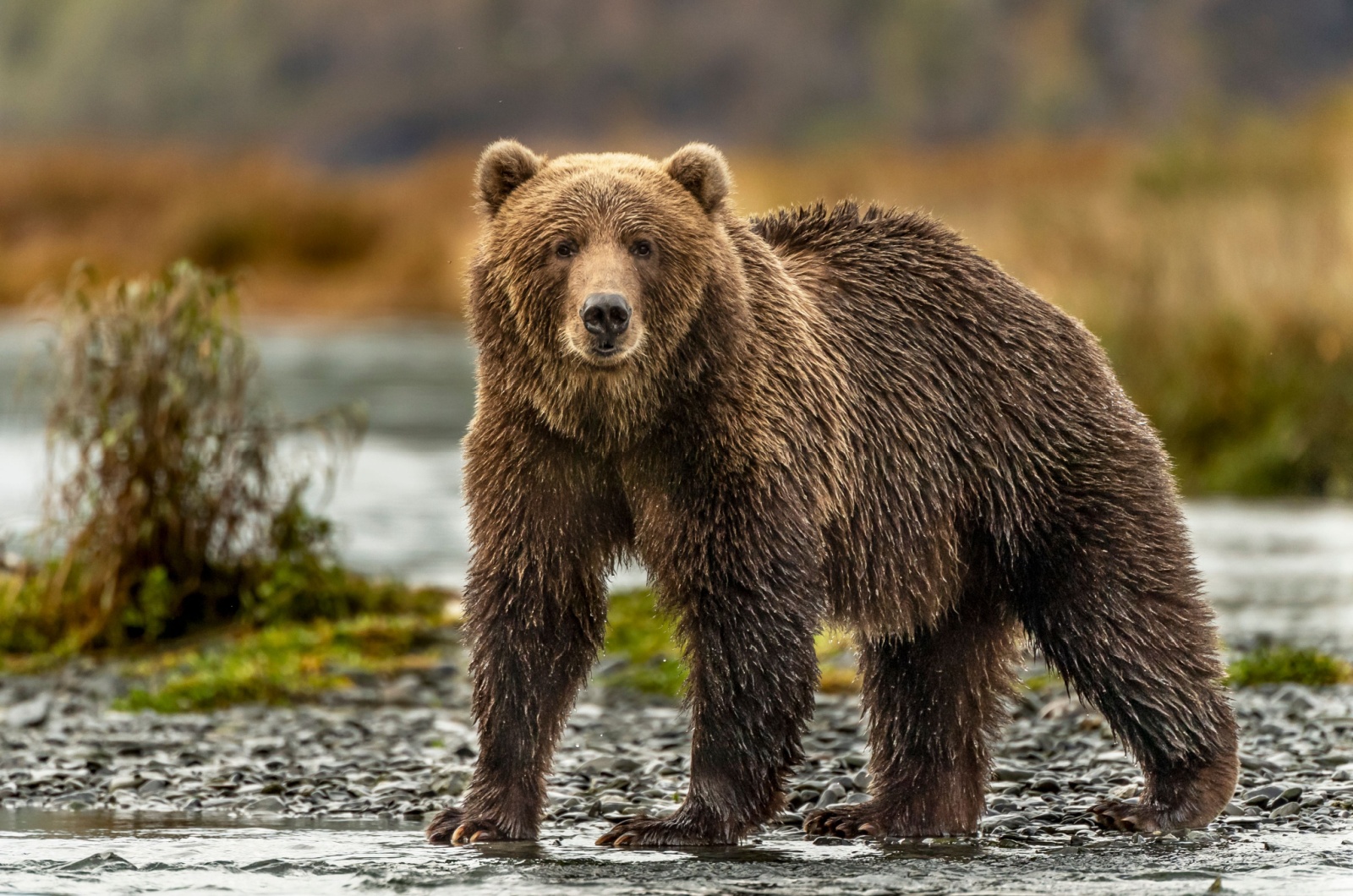
Credit: Shutterstock
Kodiak bears, a subspecies of the brown bear, are among the largest bears in the world, rivaling polar bears in size.
Found exclusively on the Kodiak Archipelago in Alaska, these giants can weigh over 1,500 pounds. Despite their massive size and strength, Kodiak bears are generally less aggressive than grizzlies.
Their remote habitat and plentiful food sources reduce the likelihood of encounters with humans, but they can be dangerous if surprised or if their cubs are threatened. With their powerful claws and bite, any provocation could quickly escalate, making them a species to approach with extreme caution.
While they are not as aggressive as other bear species, black bears are still wild animals and should be treated with respect.
If you encounter one, it’s best to remain calm and slowly back away, avoiding direct eye contact. Never run, as this can trigger their instinct to chase. Understanding their habits and respecting their space will help ensure peaceful coexistence with these curious creatures.
3. Grizzly Bear
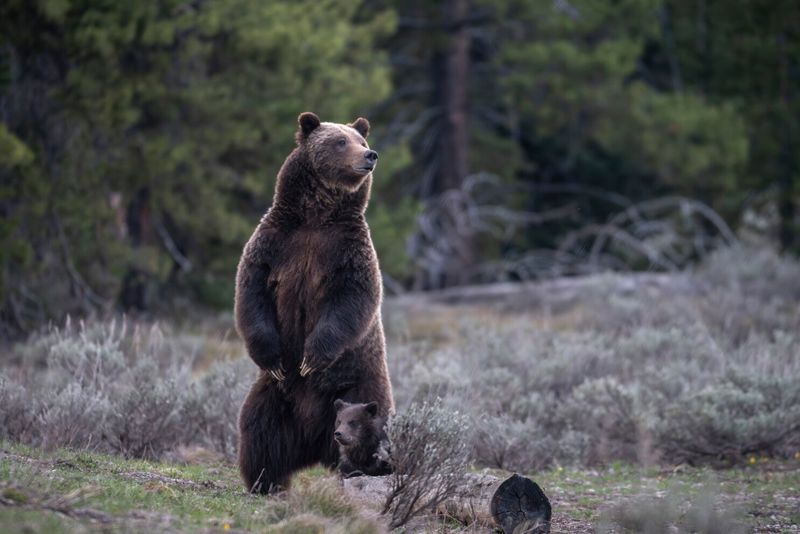
These bears are renowned for their formidable presence and strength. Found in North America, particularly in Alaska and western Canada, these bears are powerful and can be highly aggressive if provoked.
One of the most distinctive features of the grizzly bear is the large hump on its shoulders, a result of powerful muscles used for digging and hunting.
Grizzlies have a varied diet, ranging from berries and roots to fish and mammals. They are known for their ability to run at high speeds, making it difficult to escape once a grizzly bear decides to charge.
It’s essential to remember that grizzly bears are protective of their young and their territory, and surprising a bear can lead to a dangerous encounter.
When exploring areas where grizzlies live, it’s crucial to stay vigilant and make noise to avoid startling them. Carrying bear spray and knowing how to use it can be a lifesaver in case of a close encounter.
Understanding their behavior and respecting their space can greatly reduce the risk of conflict between humans and these powerful animals.
4. Brown Bear
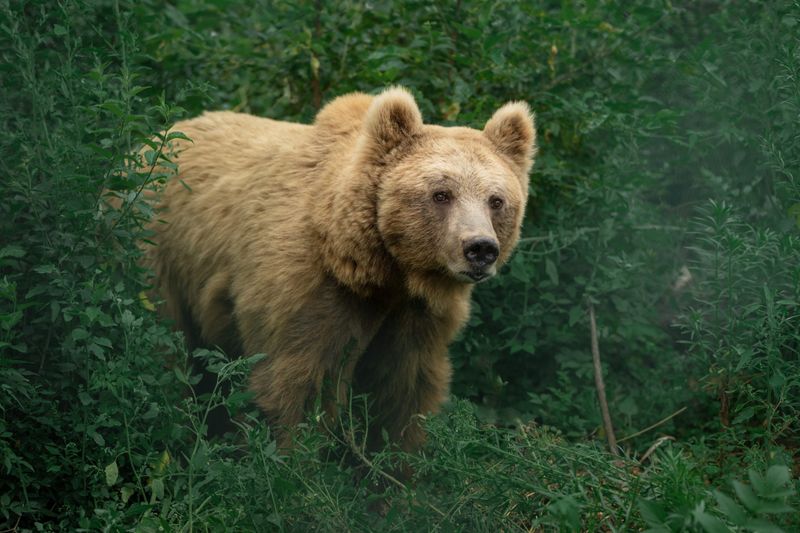
Brown bears are closely related to grizzly bears, sharing many characteristics, including strength and size. They inhabit a wide range of areas across Europe, Asia, and North America. Brown bears are versatile and adaptable, often found in forests, mountains, and even tundra regions.
These bears have an omnivorous diet, feeding on plants, insects, fish, and small mammals. Brown bears are generally solitary animals but may gather in large numbers at prime feeding spots, such as salmon-rich rivers.
Despite their size, they are agile and can climb trees if necessary. However, they prefer to stay on the ground, where they can assert their dominance.
While brown bears are not as aggressive as grizzly bears, they still pose a threat to humans. It’s important to remain cautious and give them plenty of space, especially in areas where human activity overlaps with their habitat.
By understanding their behavior and respecting their environment, we can coexist with these magnificent creatures.
5. Eurasian Brown Bear
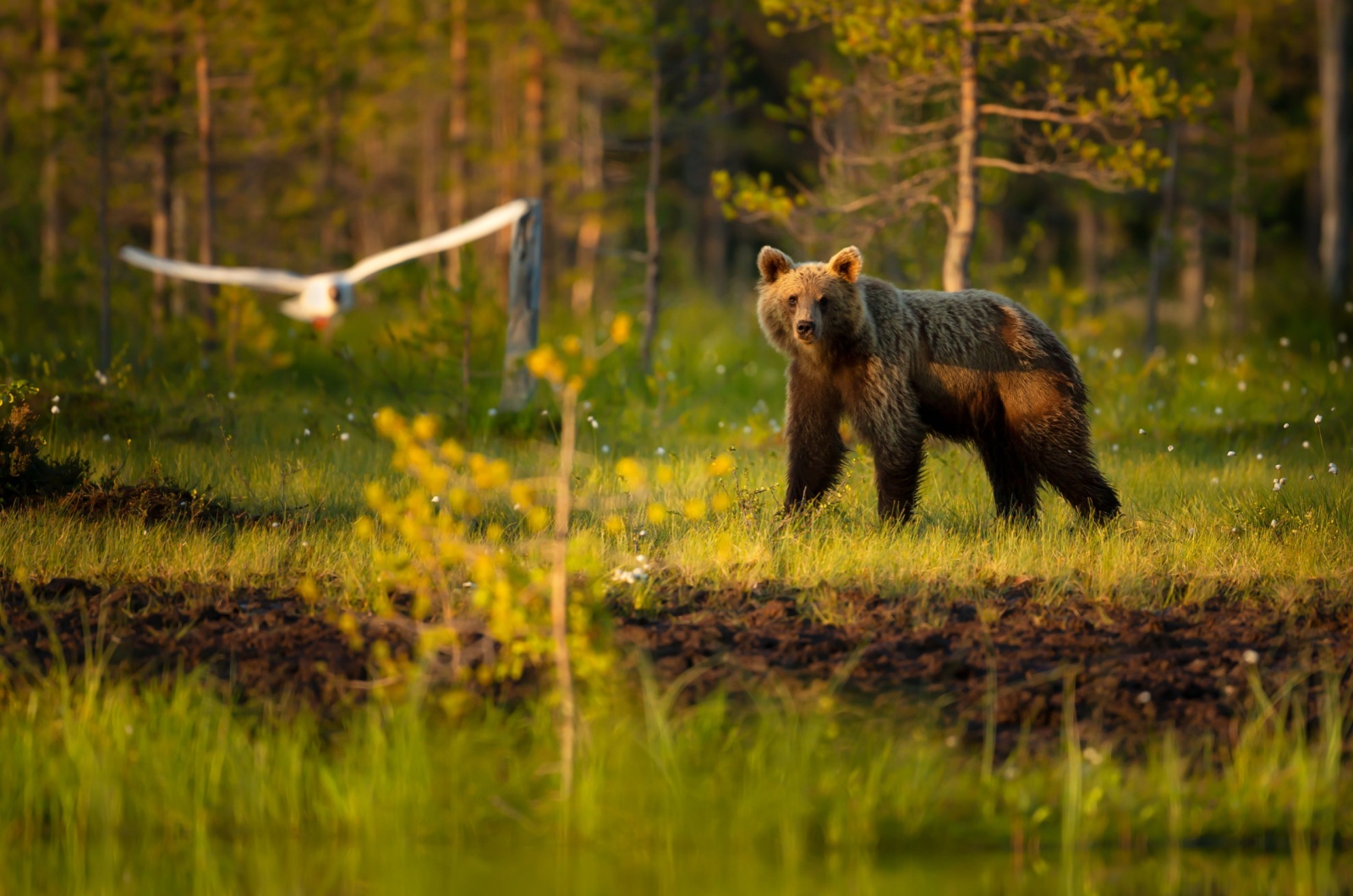
Credit: Shutterstock
The Eurasian Brown Bear is one of the most widespread subspecies of the Brown Bear, found across Europe, Russia, and parts of Asia. It is a powerful and adaptable predator, capable of living in forests, mountains, and even tundra regions.
Weighing up to 800 pounds (360 kg), it is slightly smaller than its North American relatives, such as the Grizzly Bear, but just as formidable. Despite its size, the Eurasian Brown Bear is mostly solitary and avoids human interaction, though it will defend itself if threatened.
It is omnivorous, consuming a diet of berries, nuts, fish, small mammals, and carrion. Many cultures across Europe regard the bear as a symbol of strength and resilience, and it has been featured in folklore for centuries. While populations in some areas have stabilized, habitat loss and poaching remain threats, making conservation efforts vital for their long-term survival.
6. American Black Bear

This is the most common bear species in North America, often found in forests and mountainous regions. Their appearance can vary from black to brown, and they are generally smaller than grizzly and brown bears. Despite their name, not all black bears have black fur, adding to their diverse appearance.
Black bears are primarily omnivorous, with a diet that includes fruits, nuts, insects, and occasionally small mammals.
They are generally shy and avoid humans, but can become dangerous if they associate people with food. It’s vital to secure food sources and garbage when camping or living in bear country to prevent attracting them.
7. Glacier Bear

Credit: Shutterstock
The Glacier Bear is a rare and elusive subspecies of the American Black Bear, known for its striking bluish-gray coat.
Found primarily in Southeast Alaska and British Columbia, this unique bear inhabits remote coastal areas and dense forests. Its unusual fur color, caused by a genetic variation, helps it blend into the icy, glacial terrain, giving it its name.
Despite its striking appearance, the Glacier Bear is shy and secretive, making sightings extremely rare. Like other black bears, it is omnivorous, feeding on berries, fish, small mammals, and vegetation. It is not known to be aggressive toward humans and will typically avoid confrontation whenever possible.
Due to its low population and isolated habitat, there is limited research on this bear, adding to its mystique. Wildlife enthusiasts consider spotting a Glacier Bear in the wild a once-in-a-lifetime experience, as their population is believed to be very small and declining due to habitat loss.
8. Asiatic Black Bear (Moon Bear)

The moon bear is native to Asia and recognized by the distinctive white crescent-shaped mark on its chest. These bears inhabit forests and mountainous areas across the continent. They are smaller than their North American counterparts, but can still pose a threat if they feel threatened or cornered.
Asiatic black bears are primarily herbivorous, feeding on fruits, nuts, and vegetation, but they may also consume insects and small animals.
While generally shy and reclusive, they can become aggressive if startled or if their cubs are threatened. Human activity encroaching on their habitat has led to increased encounters, making awareness and precaution vital when in their territory.
If you find yourself in areas where Asiatic black bears live, it’s crucial to stay alert and avoid surprising them.
Making noise while hiking and keeping a safe distance can help prevent unwanted encounters. Respecting their space and understanding their behavior will minimize the risk of conflict, allowing both humans and bears to coexist peacefully.
9. Spectacled Bear

The spectacled bear, also known as the Andean bear, is the only bear species native to South America. Found primarily in the Andes mountains, these bears are easily recognizable by the light-colored markings around their eyes, resembling spectacles.
Spectacled bears are mostly herbivorous, feeding on fruits, berries, and plants, but they may also consume small animals when available.
They are excellent climbers and often take to the trees to find food and escape potential threats. Despite their shy nature, they can be dangerous if provoked or surprised.
Human expansion into their natural habitat has resulted in more frequent encounters with spectacled bears.
To coexist peacefully with these unique creatures, it’s important to respect their environment and maintain a safe distance. Understanding their habits and recognizing the signs of bear presence in the wild can help prevent conflicts and ensure the safety of both humans and bears.
10. Sloth Bear
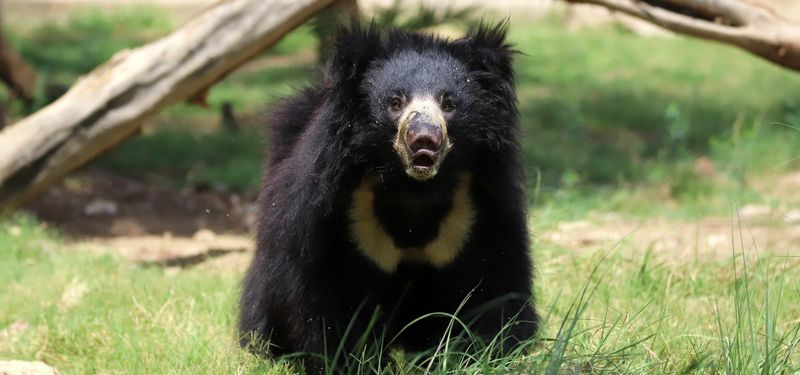
The sloth bear, native to the Indian subcontinent, is known for its shaggy black fur and long snout. These bears are primarily insectivorous, with a diet mainly consisting of termites and ants. They use their long claws and snout to dig into termite mounds and suck out the insects, creating a distinct slurping noise.
Unlike many other bear species, sloth bears are not particularly aggressive and tend to avoid confrontations.
However, if they feel threatened, especially if cubs are present, they can become dangerous. Human activities encroaching on their habitat have led to more frequent interactions, making it essential to exercise caution when in their territory.
Sloth bears are nocturnal and prefer to forage at night, so encounters are less common during daylight hours.
If you find yourself in areas where sloth bears reside, it’s important to be aware of your surroundings and make noise to alert them of your presence. By respecting their space and taking precautions, peaceful coexistence with sloth bears is possible.
11. Sun Bear
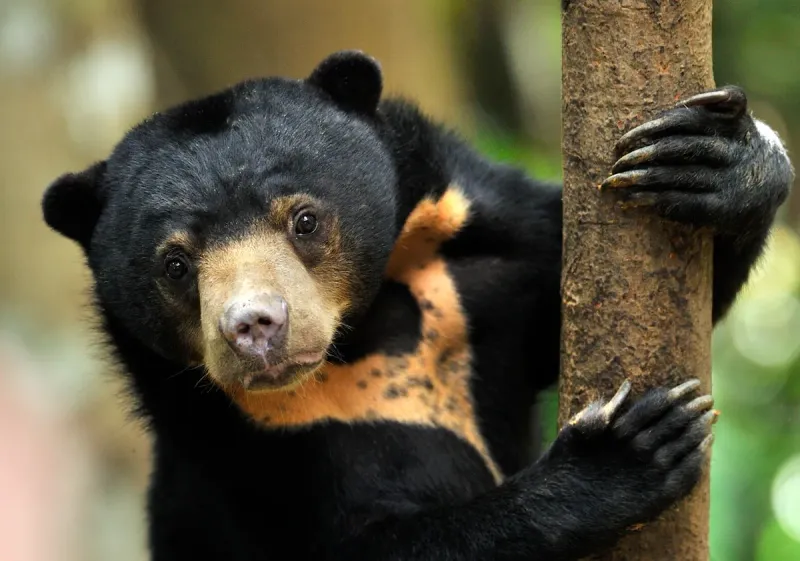
Native to the tropical forests of Southeast Asia, the Sun bear is the smallest of all bear species. Known for its short black fur and distinctive U-shaped chest mark, the sun bear is an excellent climber and often found in the trees.
Their diet consists primarily of fruits, insects, and small vertebrates, but they are also known to consume honey, earning them the nickname “honey bear.”
Despite their small size, sun bears can be aggressive if threatened. They have strong jaws and sharp claws, which they use effectively for climbing and foraging. Human encroachment on their habitat has increased the likelihood of encounters, making awareness and caution essential when in sun bear territory.
Sun bears are solitary animals and tend to avoid humans, but their curious nature can lead them into areas where people live.
If you encounter a sun bear, it’s important to remain calm and slowly back away, giving them space to retreat. Understanding their behavior and respecting their habitat will help ensure peaceful coexistence with these unique and fascinating bears.
12. Panda Bear

Credit: Shutterstock
Pandas are iconic for their gentle, bamboo-chewing demeanor, but they can be surprisingly dangerous if threatened.
Despite their herbivorous diet, pandas possess strong jaws and sharp teeth capable of delivering a powerful bite.
While typically shy and solitary, they can become aggressive if they feel cornered or if their territory is invaded. Their size—up to 300 pounds—and strength mean they should not be underestimated. In captivity or the wild, respecting their space is key to avoiding conflict.
